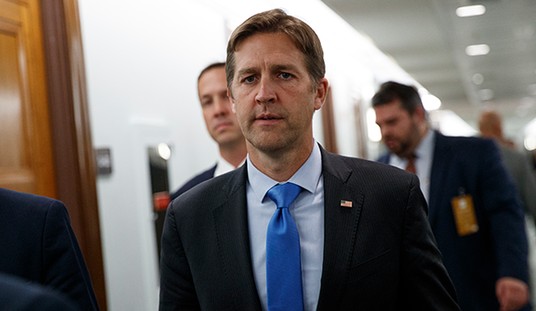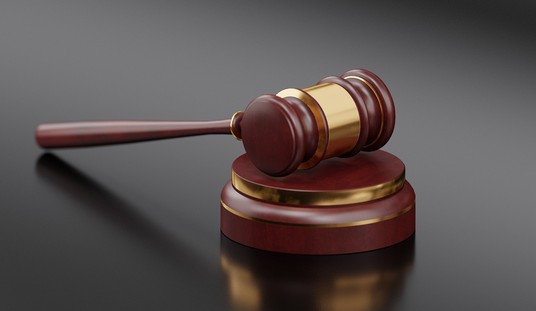Ellen Pompeo is being praised for comments she made during an interview in which she called on white people to protest if they don’t see enough people of color in every room they walk into.
Flanked by two women of color, the actress sanctimoniously told a story of how she went to a political gathering at a friend’s house, but when she didn’t see enough people of color, she left, scolding her friend for lacking diversity.
The two ladies, one Hispanic and the other African American, raised their eyebrows, surprised by the “higher consciousness” displayed by this “privileged” white woman. “I don’t see enough color, and I didn’t see enough color when I walked in the room today,” Pompeo continued, shaming the magazine that hosted the interview.
“When I show up on set, I’d like to see the crew look like the world that I walk around in every day,” she said. “As Caucasian people it’s our job, it’s our task, it’s our responsibility to make sure we speak up in every single room we walk into, that this is not okay and that we can all do better. It’s our job because we’ve created the problem.”
Before we get into why Pompeo’s seemingly compassionate statement is actually cruel and riddled with the very racism she claims to reject, let’s look at some numbers. She wants every room to mirror the racial demographic of the world she walks around in every day. Since different people walk around in different “worlds,” this demographic will change from person to person. But for the sake of argument, let’s say the world Pompeo is talking about is the United States.
The United States is composed of approximately 63 percent whites, 17 percent Hispanics, and 13 percent blacks. This means if Pompeo walks into a room with 100 people, she is going to see an overwhelming number of white people. These numbers get even starker in smaller settings, like a modest film set. Say the production crew is made up of 20 people. In that room, Pompeo will see only 2 or 3 black people and 3, maybe 4, Hispanics. And that’s if people are being hired solely by the color of their skin, which is affirmative action — something she seems to be suggesting.
It would certainly be odd, and wrong, if we demanded that every space we inhabit reflect the demographics of the nation as a whole. Can you imagine Pompeo walking into a black church and demanding that 63 percent of the blacks be replaced with whites? That, of course, would be preposterous, not to mention racist, just as it is in any other setting.
Despite her good intentions, Pompeo is fundamentally perpetuating the false notion that blacks are perpetual victims and whites must continually seek redemption for America’s history of slavery by giving them a handout. She fails to comprehend that the disparities blacks face today are caused by a variety of factors within the black community, including current pathologies that have resulted from past oppression, not current racism.
These pathologies are not white oppression, and whites cannot be responsible for them any more than they can or should be collectively guilty for any past abuses they played no part in committing. Only freedom, self-reliance, and personal responsibility exercised by blacks themselves can bring that kind of change and heal these pathologies.
Like so many liberals who walk the gilded halls of Hollywood, Pompeo thinks she’s progressive by telling white people they’re the cause of problems in the black community, and that they must stoop down to lift up poor victimized minorities because they are incapable of doing it themselves. In this, she is not progressive at all. She is not looking toward the future, she’s seeing only the past, believing America’s dark history is the cause of problems faced by blacks today.
She is also ignoring the many successes of blacks and how these could not possibly be achieved if white racism had the power and legitimacy in America so many liberals claim. While there are still bigots among us — of all colors — racism isn’t the greatest stumbling block to black success.
“Blacks have now risen to every level of American society, including the presidency,” Shelby Steele writes in Shame: How America’s Past Sins Have Polarized Our Country. “If you are black and you want to be a poet, or a doctor, or a corporate executive, or a movie star, there will surely be barriers to overcome, but white racism will be among the least of them. You will be far more likely to receive racial preferences than to suffer racial discrimination.”
Racial disparities are not proof that this statement is wrong. The fact that blacks are behind other groups in almost every category can be attributed more to dysfunction in the home, where there are high rates of out of wedlock births and a huge percentage of blacks compared to whites getting divorced, leaving families broken and struggling in poverty.
Education is also devalued in the black family compared to whites, and especially Asians. The reasons for this are varied, including blacks preferring other avenues of financial success to education, but none of them can be attributed to systemic racial discrimination.
Steele, a black intellectual who lived through the civil rights era and knows more about the plight of the black community than any white Hollywood liberal, has written extensively about how the paternalism expressed by Pompeo actually damages blacks. He has often pleaded to end the “condescension of affirmative action.”
“The benevolent paternalism of white guilt has injured the self-esteem, if not the souls, of minorities in ways the malevolent paternalism of white racism never had,” Steele argues:
Post-1960s welfare policies, the proliferation of “identity politics” and group preferences, and all the grandiose social interventions of the War on Poverty and the Great Society — all this was meant to redeem the nation from its bigoted past, but paradoxically, it also invited minorities to make an identity and a politics out of grievance and inferiority. Its seductive whisper to them was that their collective grievance was their entitlement and that protest politics was the best way to cash in on that entitlement — this at the precise moment when America was at last beginning to free up minorities as individual citizens who could pursue their own happiness to the limits of their abilities. Thus, white guilt was a smothering and distracting kindness that enmeshed minorities more in the struggle for white redemption than in their own struggle to develop as individuals capable of competing with all others.
The best thing white people can to do to “help” minorities is demand that every individual be judged by the content of their character and allowed to succeed by their own efforts and abilities rather than by the color of their skin. It is this kind of classic liberalism, which puts the liberty of the individual first, that fueled the civil rights movement. And it is only this mindset and these values that will make blacks free from white paternalism at last.
“In that era, Martin Luther King Jr. was already recognizable as an American archetype precisely because he was so aligned with the central principle of this liberalism: individual freedom,” Steele writes. This is the society blacks want — or at least they did once upon a time. They want “a free society — not necessarily free of all bigotry [that will always be with us, which is why we have anti-discrimination laws], but certainly free of all illegal discrimination.” This, Steele says, is what white Americans owe minorities:
We minorities should simply be left alone. We should not be smothered, as we have been, by the new paternalistic liberalism that emerged in the mid-1960s — a guilt-driven liberalism that has imposed itself through a series of ineffective and even destructive government programs and policies. We should be left to find our own way as free men and women in this fast-paced and highly competitive society. In many ways the minority struggle for freedom — just like white America’s long-ago struggle for freedom from British rule — has been a battle to have no oppressive or capricious power intervene between the individual and his pursuit of happiness. How, then, does it constitute progress for minorities to overcome bigotry as a limit on their freedom only to subjugate themselves to a paternalistic interventionism inspired by white guilt? There is no true freedom either way.
The narrative that “whites are the problem” undermines individual choices and abilities in a free and competitive society. Demanding inclusivity purely on skin color ignores individual interests, priorities, and talents. Maybe, for example, a lot of minorities simply weren’t interested in attending Pompeo’s interview (it’s not clear if there was an audience), or maybe more qualified white people interviewed to work on the production crew than minorities, hence the disparity.
To ignore these facts and force affirmative action onto processes to produce equal outcomes is to violate personal freedom. It is, again, racist.
“Liberalism expresses its inborn racism in the way it overlooks the full human complexity of blacks — the fact that they are more than mere victims,” Steele writes, “in order to distill and harden the idea of their victimization into a currency of liberal power.” In other words, empathy isn’t the goal. Power is.
If Pompeo really wants to show compassion, she should stop looking for color in the rooms she enters. She should look for individuals and get to know them as multifaceted human beings. In any given room, the colors might be sparse, depending on the abilities of those who earned a place in the room, or they might be saturated because the individuals have learned to succeed on their own. This is what freedom and personal responsibility look like. This is empathy. This is happiness as it should be — guilt free.









Join the conversation as a VIP Member